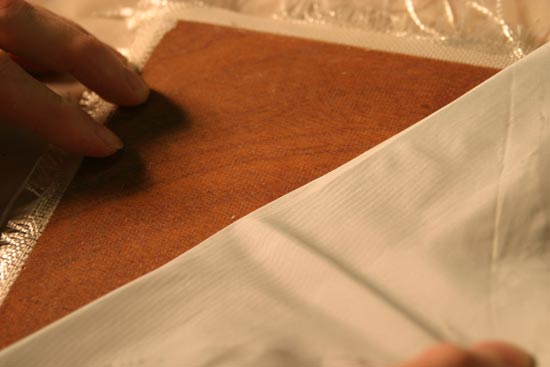
Peel Ply for Smooth Fiberglass Surfaces
Working With Epoxy and FiberglassWe’ve written before about the challenge of getting smooth surfaces with epoxy and fiberglass. It takes at least three coats of epoxy to “fill the weave,” and then hours of sanding to get to a surface finish that’s ready for paint or varnish.
What if you could skip two of the three coats of epoxy and most of the sanding? Well, you can. Sometimes.
"Peel Ply," also called "Release Fabric," is a synthetic cloth that you drape over your epoxied surface as the epoxy sets up. Once cured, you can peel off the fabric, and what’s left behind is a perfectly smooth surface that’s ready for a quick sanding, or for the next round of epoxy. No runs, no sags, no low spots.
Not only is the surface under the peel ply nearly perfectly smooth, it actually has a texture that improves adhesion if you have anything else to stick to it. We use it here whenever we can.
Like all things, there’s a downside to this miracle. Peel ply isn’t stretchy like fiberglass, so you can only use it on really flat surfaces. Hatch covers, for example. Or the components of a stitch-and-glue boat that haven’t been assembled yet, but which are pre-coated in epoxy and/or fiberglass prior to assembly.
If you try to get peel ply to conform to curves, you might end up with wrinkles in the peel ply. And the peel ply will cast those wrinkles in solid epoxy, leading to a horrifying sanding session.
Here’s how to use peel ply to save time and effort:

1. A kayak hatch cover (the flat ones, as on Shearwaters or Wood Ducks) is a perfect candidate for the peel ply treatment.

Apply the fiberglass in the usual way, with epoxy and a plastic spreader.

In order to get your fiberglass “wetted out” in one shot, you’ll want to use a little more epoxy than you usually do for a first coating. About 15 to 20% more in our experience.



2. When the fiberglass has gone clear and is thoroughly wetted out, add the peel ply.

3. Smooth the peel ply with your plastic spreader.

Look for a consistent dark color; white means you have air trapped under the peel ply. Let the epoxy cure.

4. Peel off the peel ply. You should have a near-perfect surface. If you’re varnishing, you’ll still need to sand thoroughly with 220-grit.